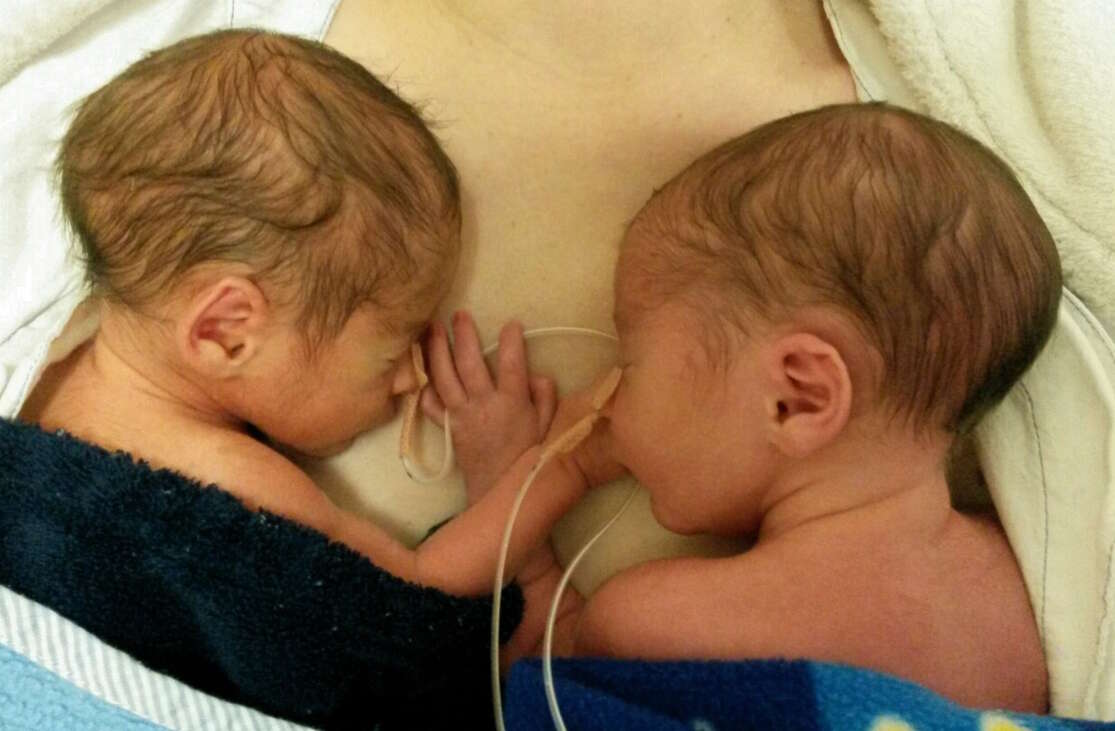„A kenguruzó babák nyugodtabbak, egészségesebbek és jobban fejlődnek” – beszélgetés dr. Schill Beáta neonatológussal
 Létezik egy módszer, amelyet a természet adott. Létezik egy orvos, akinek nem is életcélja, hanem inkább az élete, hogy minél több koraszülöttnek legyen esélye az egészséges életre. Egy tudományosan igazolt módszerről van szó, amelyet egyre több magyarországi koraszülött intenzív osztályon is használnak. De még mindig nem mindenütt. Dr. Schill Beáta, tavaly Aranyanyu-díat is nyert a munkájával, bátor nő, az elvei mellett kiálló ember, aki oroszlánként harcol azért, hogy a keze alatt cseperedő babák a lehető legjobb ellátásban részesüljenek. Jelenléte nyugalmat sugároz, hitet ad, és lássuk be, ez nem könnyű feladat a mai magyar egészségügyben. Rohr Linda beszélgetett vele a kenguruzás világnapja és a „kenguruverseny” alkalmából.
Létezik egy módszer, amelyet a természet adott. Létezik egy orvos, akinek nem is életcélja, hanem inkább az élete, hogy minél több koraszülöttnek legyen esélye az egészséges életre. Egy tudományosan igazolt módszerről van szó, amelyet egyre több magyarországi koraszülött intenzív osztályon is használnak. De még mindig nem mindenütt. Dr. Schill Beáta, tavaly Aranyanyu-díat is nyert a munkájával, bátor nő, az elvei mellett kiálló ember, aki oroszlánként harcol azért, hogy a keze alatt cseperedő babák a lehető legjobb ellátásban részesüljenek. Jelenléte nyugalmat sugároz, hitet ad, és lássuk be, ez nem könnyű feladat a mai magyar egészségügyben. Rohr Linda beszélgetett vele a kenguruzás világnapja és a „kenguruverseny” alkalmából.
-> Olvasd el a teljes cikket. <-

 A korai kötődés, azaz bonding – már a születés, szülés előtt, illetve a szül(et)és pillanatában megkezdődik. Elengedhetetlen, hogy a gyermek és az anya elválasztását meggátoljuk az élet első pillanataiban, óráiban, napjaiban. A korai kapcsolat támogatása alapvető fontosságú minden gyermeknél, de ennél is lényegesebb a koraszülötteknél és császármetszéssel világrajötteknél, traumatizált anyáknál. A szül(et)éssel egyaránt megváltoznak mind a gyermek, mind az anya neuropszichológiai mechanizmusai. A bőrkontaktus elősegíti a szülővé válást, az újszülött adaptálódását, a természetes, egészséges bio-pszicho-szociális, spirituális folyamatok kibontakozását, megvalósul a kolonizáció, immunológiai, fiziológiai szempontból is az ideális kezdetet kapja meg a kisbaba. Megvalósul az egészséges életkezdethez való joga. A támogatásban részesített korai bőrkontaktus anya és gyermeke között a gyermek mellhezkúszását, mellre tapadását eredményezi, megkezdődik a szopás-szoptatás, a gyermek egészségesen adaptálódik és elindul a szülővé válás folyamata.
A korai kötődés, azaz bonding – már a születés, szülés előtt, illetve a szül(et)és pillanatában megkezdődik. Elengedhetetlen, hogy a gyermek és az anya elválasztását meggátoljuk az élet első pillanataiban, óráiban, napjaiban. A korai kapcsolat támogatása alapvető fontosságú minden gyermeknél, de ennél is lényegesebb a koraszülötteknél és császármetszéssel világrajötteknél, traumatizált anyáknál. A szül(et)éssel egyaránt megváltoznak mind a gyermek, mind az anya neuropszichológiai mechanizmusai. A bőrkontaktus elősegíti a szülővé válást, az újszülött adaptálódását, a természetes, egészséges bio-pszicho-szociális, spirituális folyamatok kibontakozását, megvalósul a kolonizáció, immunológiai, fiziológiai szempontból is az ideális kezdetet kapja meg a kisbaba. Megvalósul az egészséges életkezdethez való joga. A támogatásban részesített korai bőrkontaktus anya és gyermeke között a gyermek mellhezkúszását, mellre tapadását eredményezi, megkezdődik a szopás-szoptatás, a gyermek egészségesen adaptálódik és elindul a szülővé válás folyamata.